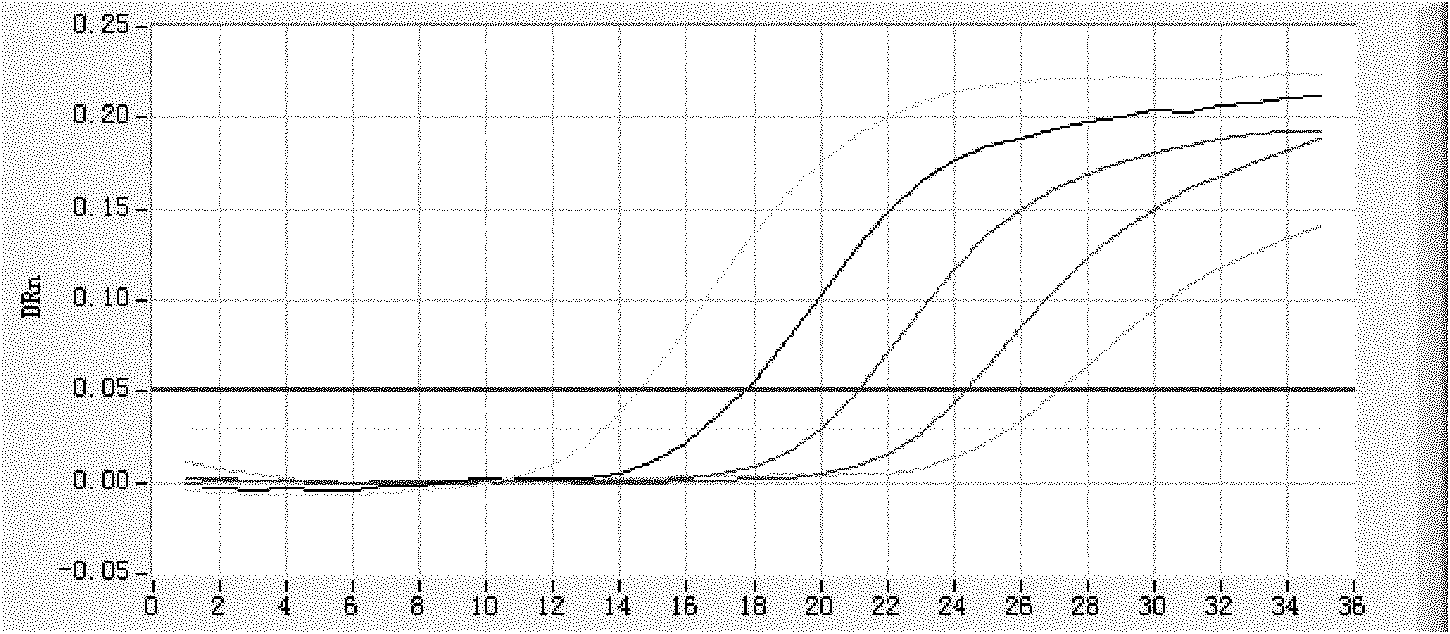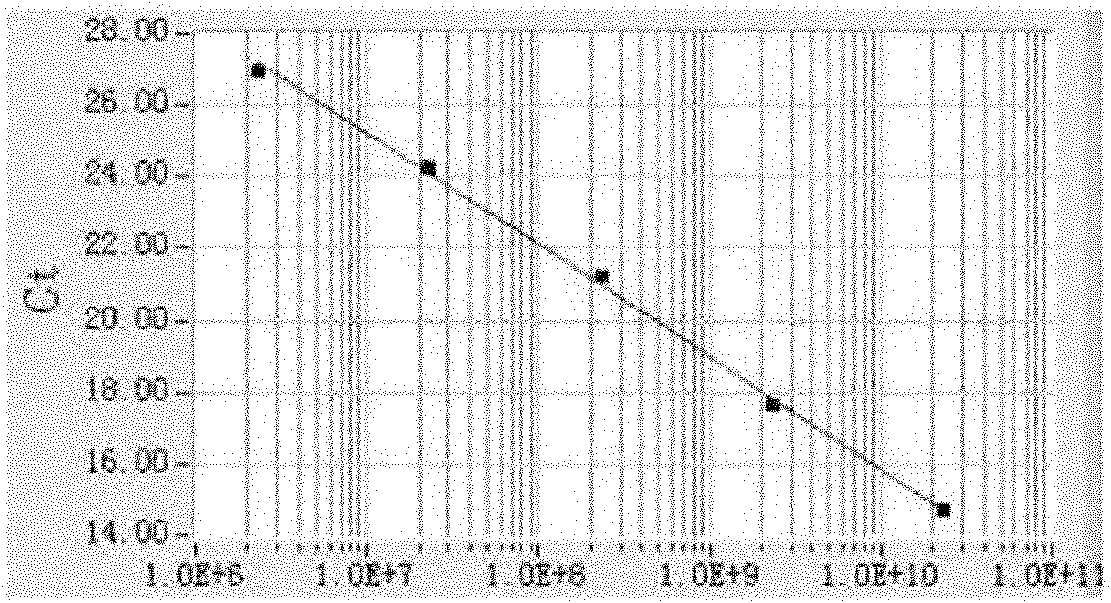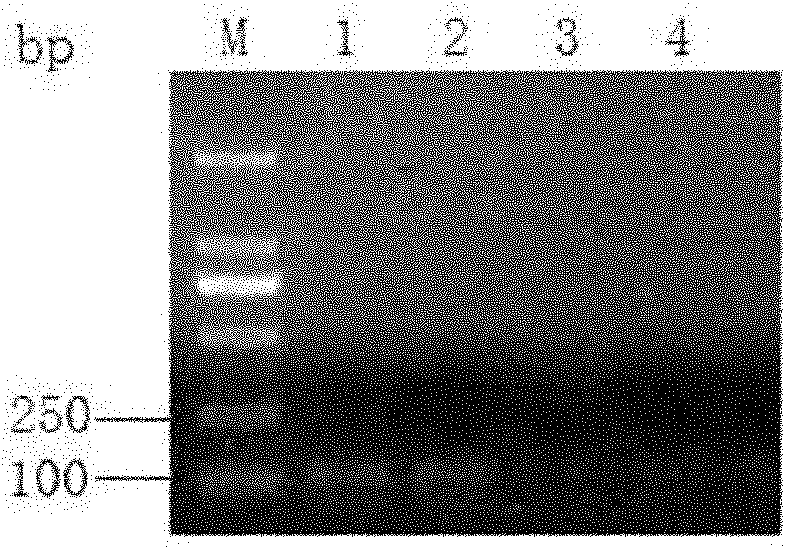Fluorescence quantitative PCR (Polymerase Chain Reaction) detection method for porcine transmissible gastroenteritis virus gene S and primer thereof
A fluorescence quantification and detection method technology, applied in microorganism-based methods, microbial determination/inspection, biochemical equipment and methods, etc., can solve problems such as S gene and dye method not involved, and achieve shortened detection time and specificity. High, not easy to contaminate effect
- Summary
- Abstract
- Description
- Claims
- Application Information
AI Technical Summary
Problems solved by technology
Method used
Image
Examples
Embodiment 1
[0035] (1) Design and synthesis of primers and probes
[0036] According to the S gene sequence of the TGEV strain preserved in our laboratory, primers were designed with primer5.0 and other software. The target fragment size was 111bp, which was synthesized by Shanghai Sangon Bioengineering Co., Ltd.
[0037] The upstream primer is sequence listing 1; the downstream primer is sequence listing 2.
[0038] (2) Cloning of S gene
[0039] Inoculate 10% of the TGEV strain into a cell bottle that has grown to 80% of the cells, adsorb at 37°C for 1 hour, change 2% of the maintenance solution, and CO 2 Cultivate in an incubator at 37°C for 3-6 days, collect the virus after 80% of the lesions appear, freeze and thaw the virus cell liquid three times repeatedly, collect the virus, and store it at -80°C for later use. Viral RNA was extracted according to Reagent kit instructions for use.
[0040] TGEV DNA was synthesized according to the instructions of the one-step reverse transcrip...
Embodiment 2
[0054] (1) Collection of clinical stool samples, adding 2 times the volume of PBS to the clinical stool samples, freezing and thawing 3 times, taking the supernatant as the extraction stock solution and storing it at -80°C for later use. Viral RNA was extracted according to Reagent kit instructions for use.
[0055] (2) PCR system optimization
[0056] Element
[0057] (3) Optimal reaction conditions
[0058]
[0059] (4) Calculate the virus content in the sample according to the fluorescent quantitative PCR result and the standard curve.
[0060] (5) Fluorescent quantitative PCR results, the fluorescent quantitative PCR instrument will automatically display the concentration of the sample, the unit is Copies / 2μL.
[0061]
PUM
 Login to View More
Login to View More Abstract
Description
Claims
Application Information
 Login to View More
Login to View More - R&D
- Intellectual Property
- Life Sciences
- Materials
- Tech Scout
- Unparalleled Data Quality
- Higher Quality Content
- 60% Fewer Hallucinations
Browse by: Latest US Patents, China's latest patents, Technical Efficacy Thesaurus, Application Domain, Technology Topic, Popular Technical Reports.
© 2025 PatSnap. All rights reserved.Legal|Privacy policy|Modern Slavery Act Transparency Statement|Sitemap|About US| Contact US: help@patsnap.com



